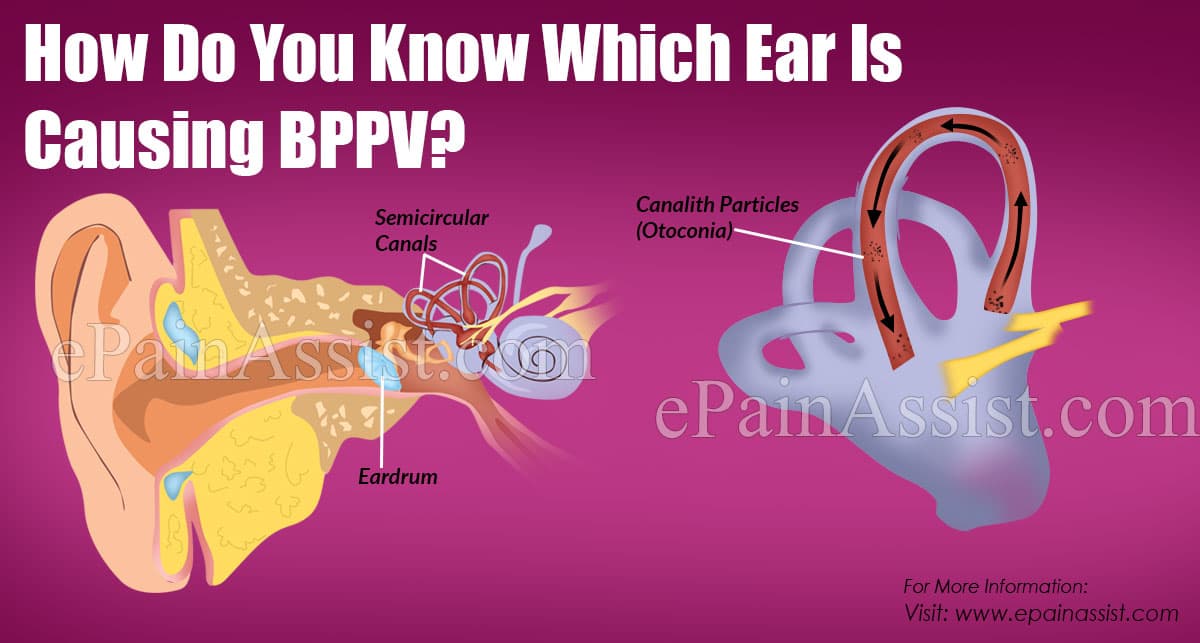BPPV stands for Benign Paroxysmal Positional Vertigo. BPPV is mainly caused when there is a problem in the inner ear. Vertigo is usually a kind of feeling when the patients feel the world is spinning around them. But how to you know which ear is causing BPPV? Read on to know more.

How Do You Know Which Ear is Causing BPPV?
BPPV or Benign Paroxysmal Positional Vertigo can occur due to the formation of calcium deposition in the inner canals of the ear. When it occurs, the patient feels vertigo which usually comes and goes and for some people, this problem remains for few days to a week. Many people wonder as to how do you know which ear is causing BPPV. Here are some ways to determine this.
With the advent of new and modern technology, the detection of BPPV has become a lot easier nowadays. It is very important to detect BPPV or Benign Paroxysmal Positional Vertigo because without knowing which ear is causing BPPV or which side is affected, it is not possible to plan treatment.
BPPV usually resolves in few days, hence the treatment very simple. The treatment of this disease is also called as particle repositioning maneuver. However, before you go for the treatment of BPPV or Benign Paroxysmal Positional Vertigo it is very essential that you identify your affected side. So, how to you know which ear is causing BPPV?
The following are some procedures with the help of which you can easily determine the affected side and know which ear is causing BPPV.
- The first thing that you need to do is to sit on the bed in such a way that in case you lie down your head will marginally hang over the end of your bed.
- Second, you need to turn your head towards your right and you need to lie back as soon as possible.
- Then you must wait for at least 60 seconds.
- Now, in case you observe that you have a dizzy feeling then you must understand that your right ear is affected. Then you know that your right ear is causing BPPV.
- However, in case you do not feel any kind of dizziness then you can sit up and wait for 1 minute before you check the other side.
- After that, you need to turn your head towards your left side and again lie back as soon as possible.
- Now, you again need to wait for 1 minute.
- Now, if you feel dizziness then you must understand that your left ear is affected. This helps you to know that your left ear is causing BPPV.
If you have been suffering from BPPV or vertigo, which is posture related, proper treatment can help to resolve the problem. With the above procedure it is clear that detecting BPPV or Benign Paroxysmal Positional Vertigo is quite easy and you can perform it at home. In case you experience vertigo or are able to detect BPPV in any of your sides, you must seek medical advice. Even if you know which ear is causing BPPV, appropriate examination and clinical tests can confirm the presence of BPPV or Benign Paroxysmal Positional Vertigo and the affected side.
Depending on the cause of your vertigo, the doctor will treat with any one of the two procedures called as Epley maneuver and Semont maneuver. For some people, where the cause of BPPV may be neck injury or muscle spasms, additionally exercises for the neck or physical therapy may be advised. Any other underlying cause of vertigo is treated with appropriate medicines or physical therapy. However, it is usually seen that vertigo or BPPV resolves on its own within a few days or after a week or two, with or without treatment. This is because our brain gets used to the confusing signals that the brain gets from the inner ear and no longer experiences any disturbance.
Conclusion
Thus it is seen that BPPV is not a serious disease and it can be diagnosed and treated very easily. Apart from that the symptoms that are associated with BPPV usually goes away in a few weeks when the brain starts to adjust the confusing signal. For some people adequate rest and regular exercises do help to prevent BPPV or Benign Paroxysmal Positional Vertigo. Regular physical activity and stress management also helps to prevent and manage BPPV to some extent. For those who have had previous episodes of BPPV, it is important to continue the prescribed exercises or treatment and seek medical opinion, as needed.
- Mayo Clinic: https://www.mayoclinic.org/diseases-conditions/vertigo/symptoms-causes/syc-20370055
- American Academy of Otolaryngology – Head and Neck Surgery: https://www.entnet.org/content/benign-paroxysmal-positional-vertigo-bppv
- Cleveland Clinic: https://my.clevelandclinic.org/health/diseases/9523-benign-paroxysmal-positional-vertigo-bppv
- Harvard Health Publishing: https://www.health.harvard.edu/a_to_z/benign-paroxysmal-positional-vertigo-a-to-z
Also Read:
